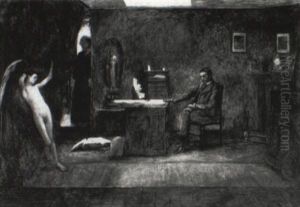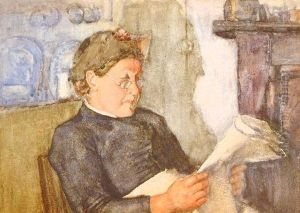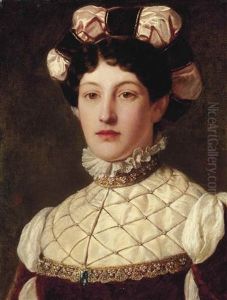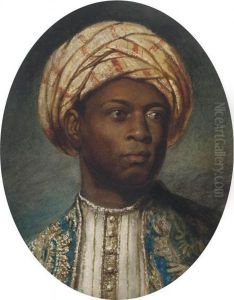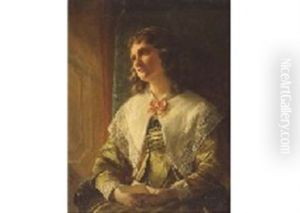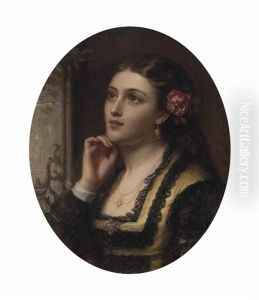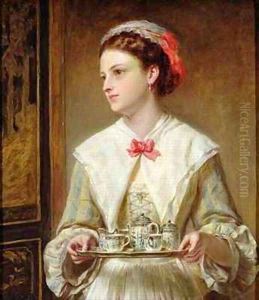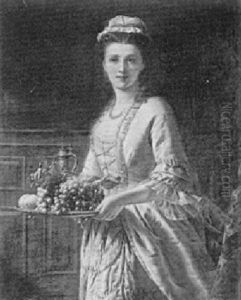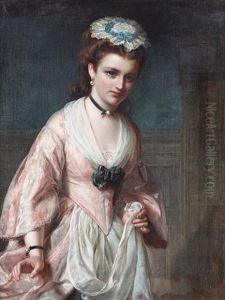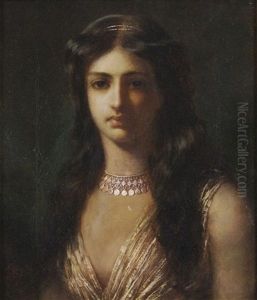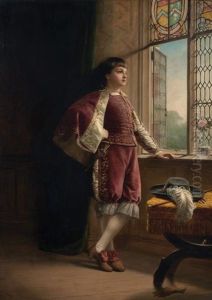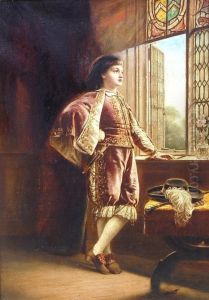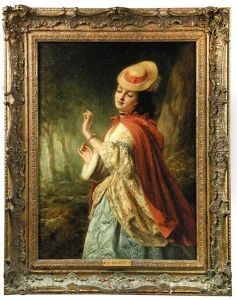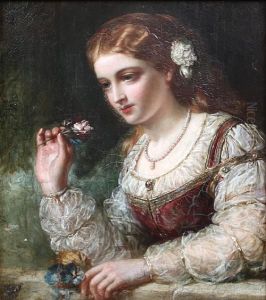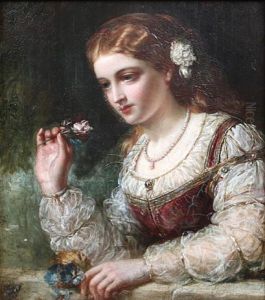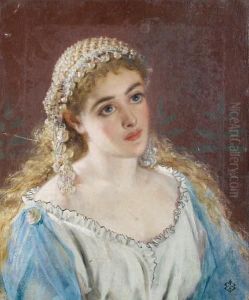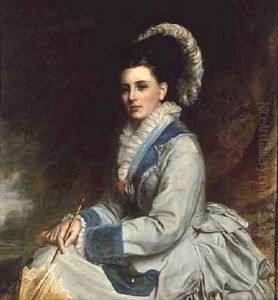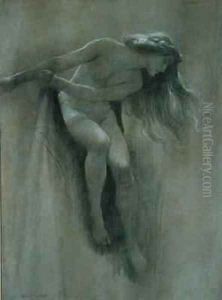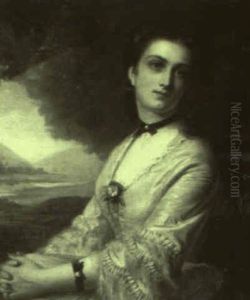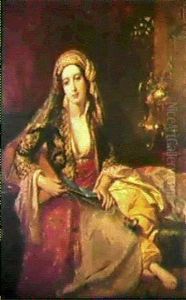John Robert Dicksee Paintings
John Robert Dicksee was an English painter and illustrator born in 1817 in London, England. He was part of a family that had a significant impact on the Victorian art world, with his children Frank Dicksee and Margaret Dicksee also becoming notable artists. Although not as widely known as his son Sir Frank Dicksee, John Robert Dicksee contributed to the Victorian era's artistic scene with his own body of work.
John Robert Dicksee began his artistic training at an early age and was associated with the school of design which later became the Royal College of Art. His early works were primarily genre scenes and landscapes, but as his career developed, he began to focus more on historical and literary subjects, which were popular among the Victorian public. He exhibited his works at the Royal Academy and other venues, gaining a certain level of recognition and respect among his contemporaries.
Throughout his career, Dicksee's style embodied the Victorian taste for romanticism and sentimentality. His paintings often featured elaborate and dramatic scenes, with a keen attention to detail and a lush use of color. These qualities made his work accessible and appealing to the Victorian middle class, who were the primary consumers of art at the time.
Dicksee's legacy is perhaps overshadowed by that of his son, Sir Frank Dicksee, who became a renowned painter in his own right and eventually the president of the Royal Academy. However, John Robert Dicksee's contribution to the Victorian art scene provided a foundation for his children's successes. He instilled in them an appreciation for the arts and the technical skills necessary to excel in the competitive world of Victorian painting.
John Robert Dicksee passed away in 1905, leaving behind a body of work that, while not as extensively celebrated as that of his offspring, played a role in the rich tapestry of 19th-century British art. His paintings remain a testament to the era's aesthetic values and continue to be studied by those interested in Victorian art and culture.
